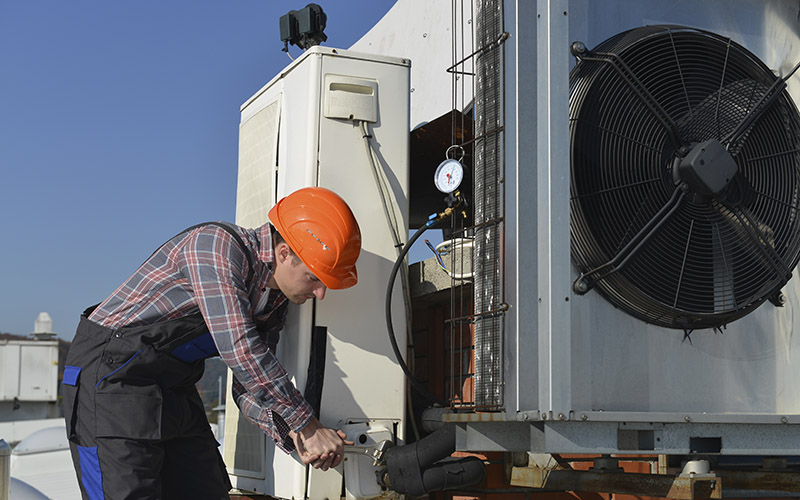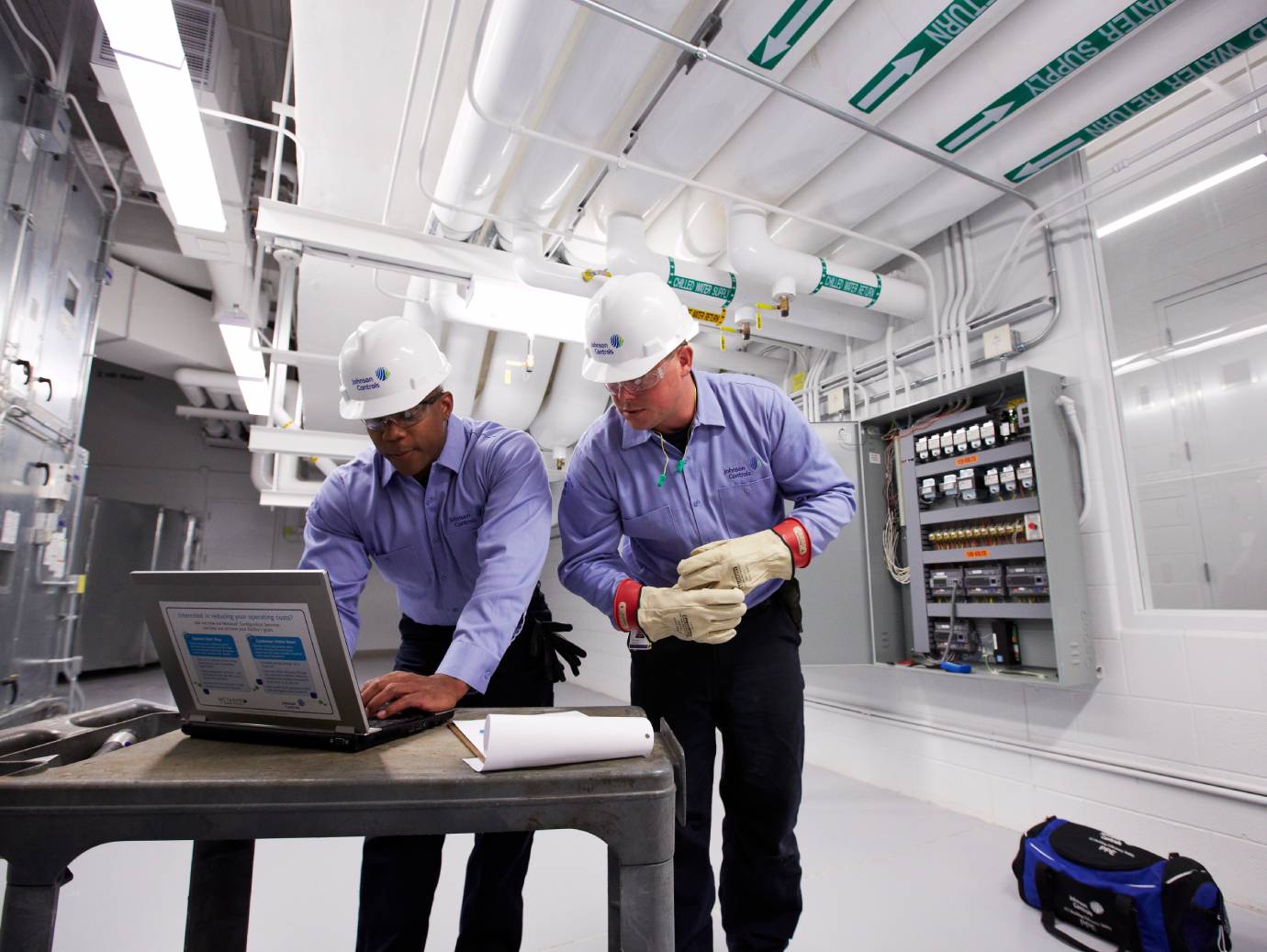Avoid Costly Repairs with Scheduled heat pump service
Avoid Costly Repairs with Scheduled heat pump service
Blog Article
How a Warm Pump and Heating System Collaborate to Enhance Your Home's Heating Effectiveness
Comprehending just how a heatpump and heating system collaborate is necessary for home owners looking for reliable home heating options. Each system has its toughness, supplying a well balanced strategy to home convenience. The heatpump masters moderate temperatures, while the furnace supplies rapid heat throughout severe cold. This synergy not only decreases energy prices yet likewise enhances the lifespan of both devices. What aspects influence this collaboration, and just how can home owners optimize their benefits?
Recognizing Warmth Pumps: Exactly How They Work
Although many individuals may be not familiar with their internal workings, warmth pumps play a necessary function in modern home heating systems. These devices run by transferring warm from one location to one more, making use of the principles of thermodynamics. In cooler months, a warmth pump essences warm from the outdoors air, ground, or water, and transfers it inside to warm up the home. Alternatively, during warmer months, it can turn around the procedure, functioning as an a/c unit by removing warmth from inside to the outside.Heat pumps consist of an evaporator, growth, condenser, and compressor shutoff. The cooling agent within the system absorbs warm as it vaporizes at reduced temperature levels and pressures. The compressor after that increases the pressure and temperature of the cooling agent, permitting it to release heat as it condenses. This effective procedure can substantially reduce energy consumption compared to standard home heating approaches, making heatpump a lasting choice for climate control in homes.
The Role of Heating Systems in Home Heating
Heating systems play a necessary duty in home heating by providing a trustworthy resource of heat throughout the chillier months. They run by producing warmth with combustion or electric resistance, distributing it throughout the home via ducts or radiant systems. The efficiency of a furnace is typically determined by its Annual Fuel Usage Efficiency (AFUE) rating, which indicates just how properly the system converts fuel right into heat.Furnaces can use different energy resources, consisting of natural gas, electricity, gas, or oil, permitting house owners to select the most ideal choice for their needs. Unlike warmth pumps, which might struggle in severe cold, heaters maintain regular performance, making certain that interior temperature levels remain comfy despite outside problems. Additionally, modern-day heating systems frequently come equipped with sophisticated technology, such as variable-speed blowers and clever thermostats, boosting their efficiency and responsiveness. This adaptability makes furnaces a vital component in all-inclusive home heating strategies.

Benefits of Using Both Solutions Together
Integrating the strengths of both heating systems and heatpump can bring about a much more reliable and effective home heating option. Utilizing both systems enables homeowners to benefit from the heatpump's energy performance during milder temperatures while counting on the furnace for more severe cold problems. This dual technique can greatly decrease power prices, as heat pumps take in much less electricity than conventional home heating methods when temperatures are moderate.Additionally, utilizing both systems with each other can boost comfort levels in the home. Heatpump can provide constant, also home heating, while heaters can quickly raise ambient temperatures when needed. In addition, the integration of both systems can prolong the life expectancy of devices by minimizing damage on each device, as they share the work. Inevitably, homeowners can enjoy a balanced, affordable heating solution that adjusts seamlessly to differing weather, making sure a cozy and welcoming home throughout the winter season.
Exactly How Heat Pumps and Furnaces Complement Each Various Other
They develop a complementary heating system that makes best use of performance and convenience when homeowners incorporate heat pumps and furnaces. Warmth pumps run by moving warm from the outside air or ground, making them very effective in moderate environments. They excel throughout milder temperatures, providing cost-efficient home heating. Alternatively, heating systems create warm through combustion or electrical resistance, providing solid, immediate heat during extreme cool conditions.The combination of these 2 systems enables vibrant adjustments based upon temperature level changes. Throughout warmer months or milder winter season days, the heatpump can take the lead, conserving power and reducing expenses. As temperature levels drop, the heating system can seamlessly engage, making sure consistent warmth throughout the home. This synergy not just optimizes energy use yet additionally enhances the life expectancy of both systems, as each device runs within its suitable efficiency variety. With each other, they create a balanced setting that adjusts to varying climate demands.
Enhancing Performance: Tips for Homeowners
Homeowners can enhance their heating effectiveness with numerous sensible strategies. Establishing a regular maintenance schedule, integrating smart thermostat technology, and executing efficient insulation and sealing services are essential steps. These steps not only improve comfort but also decrease energy costs.
Regular Upkeep Set Up
To assure optimal heating effectiveness, establishing a regular upkeep timetable is crucial for any kind of home. Home owners need to focus on routine evaluations of both heatpump and furnaces to identify peak efficiency. This includes changing air filters every one to 3 months, as blocked filters can significantly minimize efficiency. Furthermore, organizing professional upkeep at the very least yearly allows specialists to identify and address possible problems before they rise. House owners should additionally clean up the warmth pump's outside unit to protect against debris build-up that can impede air movement. By adhering to a normal maintenance timetable, house owners not just improve their heating unit' effectiveness yet also expand their lifespan, bring about greater convenience and reduced energy prices throughout the colder months.
Smart Thermostat Combination
Incorporating a clever thermostat right into a home furnace can greatly boost power performance, specifically as it permits for specific control over temperature level setups. These devices can find out the homeowner's routine and choices, automatically adjusting the temperature level to maximize convenience while decreasing power usage. For circumstances, they can lower heating throughout times when the home is empty, minimizing unnecessary consumption. Numerous smart thermostats additionally provide real-time energy use data, enabling home owners to make enlightened decisions about their home heating practices. Additionally, remote accessibility by means of smartphone applications enables users to change settings from anywhere, making certain the home is warm upon return. Overall, helpful site wise thermostat integration not just improves convenience but substantially contributes to power savings and performance.
Insulation and Sealing Solutions
Smart thermostats play a vital duty in power effectiveness, yet their effectiveness can be greatly boosted by appropriate insulation and sealing solutions. House owners should focus on insulating attics, wall surfaces, and floors to minimize warm loss. High-quality insulation materials, such as spray foam or fiberglass, can considerably boost thermal resistance. Additionally, sealing spaces around windows, ducts, and doors avoids cold air infiltration and warm retreat. Weatherstripping and caulking work methods for addressing these leaks - furnace replacement. Normal examinations for air leakages, in addition to making use of blower door tests, can assist determine problem areas. By purchasing insulation and sealing, homeowners can optimize the performance of their furnace, ultimately resulting in minimized energy usage and lower utility costs
Usual Misconceptions Regarding Warm Pumps and Furnaces
What mistaken beliefs surround heatpump and furnaces? Many people erroneously think that heatpump are ineffective in colder environments. In truth, contemporary heatpump are designed to run effectively even in reduced temperature levels, offering reputable heating throughout winter. An additional typical myth is that heaters are always more reliable than warm pumps. This depends on the certain energy resources and efficiency rankings of the units in inquiry. Some may additionally think that making use of both systems all at once is unnecessary, but in reality, this combination can maximize home heating performance, specifically during severe climate condition. In addition, people often presume that heatpump require continuous upkeep, when in truth, they have comparable upkeep needs to conventional home heating systems. By debunking these myths, home owners can make more educated choices concerning their home heating options, eventually bring about boosted comfort and energy effectiveness in their homes.
Upkeep Factors To Consider for Combined Systems

Frequently Asked Inquiries
Can Warmth Pumps Job Efficiently in Incredibly Cold Climates?
Heatpump can struggle in exceptionally cool climates due to reduced performance and warm extraction limitations. Advancements in modern technology have led to models created for better efficiency in such conditions, boosting their practicality in harsh settings.
How Lengthy Do Heat Pumps and Furnaces Commonly Last?
Heatpump generally last 15 to two decades, while furnaces have a life-span of 15 to 30 years. Normal maintenance can prolong their long life, guaranteeing reliable operation and minimizing the demand for premature substitutes.

What Is the Average Price of Setting Up Both Systems?
The ordinary cost of mounting both a heat pump and a heater usually varies between $5,000 to $10,000 - ductless mini splits. Variables influencing this expense consist of system size, installment complexity, and regional labor prices
Are There Tax Motivations for Using Energy-Efficient Heating Equipments?
Numerous home owners ask about tax obligation incentives for energy-efficient furnace. Numerous federal and state programs usually provide discounts or credit ratings, motivating the fostering of lasting modern technologies to decrease energy usage and advertise environmental obligation.
Exactly how Do I Select the Right Dimension Heatpump and Heating System?
Selecting the ideal dimension heatpump and furnace involves calculating the home's square video footage, thinking about insulation top quality, and reviewing neighborhood environment. Consulting a specialist can assure ideal system performance and energy efficiency based upon specific demands. heat pump service. Comprehending exactly how a heat pump and furnace work with each other is crucial for home owners looking for effective heating services. In colder months, a warmth pump essences warm from the outside air, ground, or water, and transfers it inside to her latest blog warm up the living area. When property owners integrate warmth pumps and heating systems, they produce a complementary home heating system that makes best use of performance and comfort. Heat pumps run by moving heat from the outside air or ground, making them extremely effective in modest climates. Warm pumps can battle in extremely cold environments due to lowered performance and warmth removal restrictions
Report this page